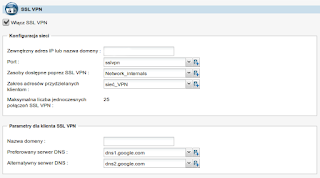[text] IPv6 Certification
Serfując po sieci natknąłem się na bardzo ciekawą stronę, która pozwala na zweryfikowanie swoich wiadomości odnośnie IPv6 http://ipv6.he.net/certification/index.php
Idąc po szczeblach certyfikacji, zwiększamy zasób swojej wiedzy. W dniu dzisiejszym rozpocząłem przygodę odnośnie IPv6. Pierwsze zadanie to odpowiedzenie na pięć pytań, które wynikają z przeczytanego tekstu.
Idąc po szczeblach certyfikacji, zwiększamy zasób swojej wiedzy. W dniu dzisiejszym rozpocząłem przygodę odnośnie IPv6. Pierwsze zadanie to odpowiedzenie na pięć pytań, które wynikają z przeczytanego tekstu.
A Basic Introduction to IPv6
So what is „IPv6″, and why do I need to know about it?IPv6 or IP version 6 is the next generation Internet protocol which will eventually replace the current protocol IPv4. IPv6 has a number of improvements and simplifications when compared to IPv4. The primary difference is that IPv6 uses 128 bit addresses as compared to the 32 bit addresses used with IPv4. This means that there are more available IP addresses using IPv6 than are avaialbe with IPv4 alone. For a very clear comparison, in IPv4 there is a total of 4,294,967,296 IP addresses. With IPv6, there is a total of 18,446,744,073,709,551,616 IP addresses in a single /64 allocation.To also help illustrate the sheer magnitude of available IP addresses using IPv6, you can get 65536 /64 allocations out of a single /48, and then 65536 /48 allocations out of a single /32. Many Service Providers are getting /32 allocations from their Regional Internet Registry (RIR) like ARIN, APNIC, RIPE, etc.A significant difference between IPv6 and IPv4 is the address notation. IPv4 uses a period (.) between each octet, compared to IPv6 which uses a colon (:). With IPv6, if you have a series of zeroes in a row, the address need not be written out completely. You can use a double colon (::) to represent that series of zeroes, however you can only use that once. For example, if you have an address like „2001:0DB8:0000:0003:0000:01FF:0000:002E”, it can be written like „2001:DB8::3:0:1FF:0:2E” or „2001:DB8:0:3:0:1FF::2E”, but would never be written like „2001:DB8::3::1ff::2E”. You also cannot have three colons in a row (:::).IPv6 availability depends on your Service Provider, either at home or for work. In a dual-stack environment, IPv4 and IPv6 co-exist along the same connection and don’t require any special kind of connection. If dual-stack is not available, you might find yourself using an IP tunneling product or service to bring IPv6 connectivity to you. IPv4 exhaustion, as of this writing, is estimated to happen sometime in early or mid 2011. When this happens, IPv4 won’t simply disappear off the face of the Internet, but continued explosive growth requiring more unique IP address assignments will mean using more and more of the abundant IPv6 address space.Many Operating System platforms have native IPv6 support these days. The UNIX based platforms like Linux, BSD (Free, Open, Net) & MacOSX have had IPv6 support enabled for years now. Microsoft Windows starting having native IPv6 support enabled by default with it’s Vista and Windows 2008 products. Earlier Windows versions like 2000/2003/XP had to have it installed optionally, and did not have as robust features that are available in the newer versions of Windows. Even common web browsing and email software will use IPv6 if it is enabled and available, without having to check off an option or special configuration. The transition from IPv4 to IPv6 is being worked on to be as seemless as possible, and many might not even notice the subtle changes in the coming years.
Kolejne etapy będę opisywał.


Komentarze
Prześlij komentarz